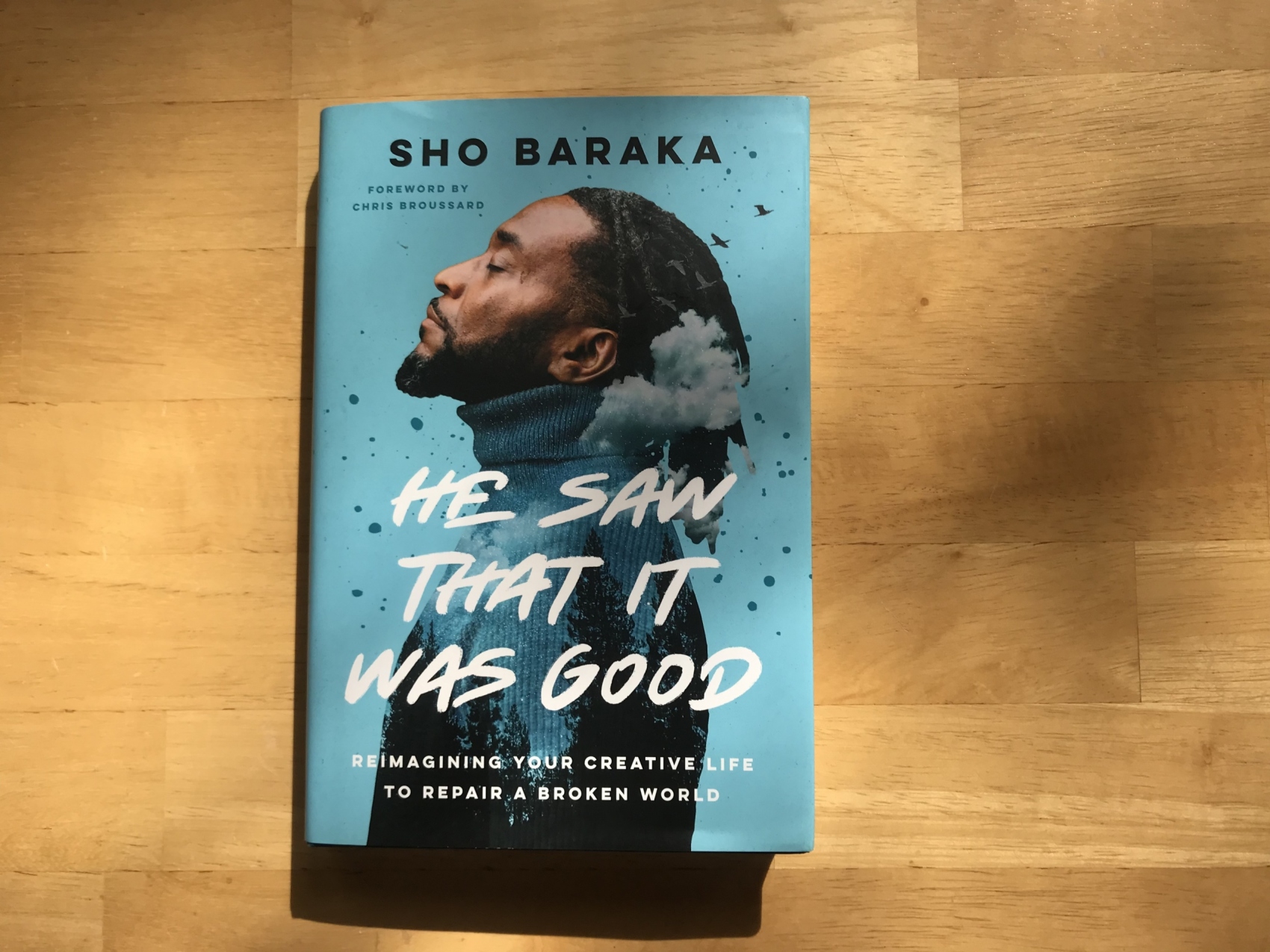Margie and I received a copy of He Saw That It Was Good as a gift from our son-in-law, an artist and art teacher. He said it had challenged and motivated him, which meant the book was put in my Must-Read pile. Where it sat for a few weeks until I finished the books I was already reading, a constant state of affairs in my life. I actually have more than one Must-Read pile—right now there are four—and each contains about ten volumes. It’s a lovely, reassuring thing to behold, reminding me I have a life full of learning and joy.
When I begin a new book, it usually takes me a few pages, sometimes a chapter or two before I gain a firm impression as to how, or whether the book will impact me. Not so, here. The opening two sentences signaled that the author was serious, and that to him the truth about beauty and the gospel and creativity and God’s glory was of far greater significance than whether his reader—me—would be comfortable with everything he had to say. “We discover an immeasurable amount of good in our lives,” Baraka begins, “when we truly realize the depths of our depravity and indifference. We would each like to think we are part of the solution rather than the problem.” OK, then, I thought. This was going to be good.
By the way, if you doubt what Baraka wrote in those two opening sentences is true, read He Saw That It Was Good; and if you believe it to be true, you’ll want to read it as well. It will be a balm to your soul, a challenge to your thinking, and an encouragement to live creatively and faithfully in the ordinary pursuits of your life and work.
He Saw That It Was Good is a fascinating read, partly because it merges several genres seamlessly. It is a memoir, telling the story of Baraka’s life, and growing maturity as a thinker, activist, and recording artist. It is a theological study, challenging us to take seriously what the Bible teaches concerning the arts, creativity as image-bearers of God, and how creativity brings healing to a dark and broken world. It is a critique of so-called Christian art, showing how we have often squandered a chance to demonstrate the gospel preferring instead an unrealistic vision of comfort and sentimentality.
Christian art does not need porcelain icons. Sure, they’re appealing, but they break with the slightest tension. The Spirit of God has made us into precious gems who can endure the pressures of life. Beautiful but strong. If our call is to be salt in the world, then we must be honest about the sanctified and the scandalous…
Some are afraid of the dark. Others are entangled by it. The more we sanitize the world, the more likely we are to be traumatized by its evil. We should never be callous to evil, but we should never be shocked…
Our art replicates either the shallowness or the depth of our relationships with God and people. [p. 143]
He Saw That It Was Good is also a bracing challenge to think and live biblically, with a particular emphasis on Christian faithfulness characterized by creativity in all we are and do. Part of what I love about the book is that Baraka made me think, and then said, in essence, “OK, enough thinking, go and do!” Baraka has also penned a loving reflection on Black and White evangelicalism with a plea to take seriously our Lord’s call to a proper unity that takes advantage of the fact that He insists we desperately need one another as members of the same body.
We have trouble seeing Jesus in all his subtle nuance. Instead, we have created and consumed a falsely bifurcated Christ in our literature, music, and theology. Depending on our views and background, we can choose which of his teachings we like and which we’d prefer to ignore. My assessment is that Black Christian expression, especially in its art, has never departed from the Jesus of justice. He is a savior who cares about pain, liberation, and provision. This is why Black gospel music tends to love communal supplications for provision while contemporary Christian music popular among White majority culture tends to be more about what I might call “intrapersonal investigations of piety.” Now, both are great spiritual disciplines that Christ affirms. Both are well intended and meant for good. But why do we have such trouble holding them together in holy tension? [p. 58]
And in the final chapter, “You Good? Baraka explores practical ways to start taking the possibilities of our creativity seriously. As you read it, you’ll discover that the chapter isn’t finally about you and me, even though it’s addressed to us as readers. It’s really about the Lord, who is all beauty and truth, and who is, in the end, is the one who is truly and finally Good.
He Saw That It Was Good is not just worth reading, it is important reading. I recommend it to you warmly.
Book recommended: He Saw That It Was Good: Reimagining your creative life to repair a broken world by Sho Baraka (Colorado Springs, CO: WaterBrook Books; 2021) 179 pages + notes.
Photo: image taken by the author with his trusty iPhone.



